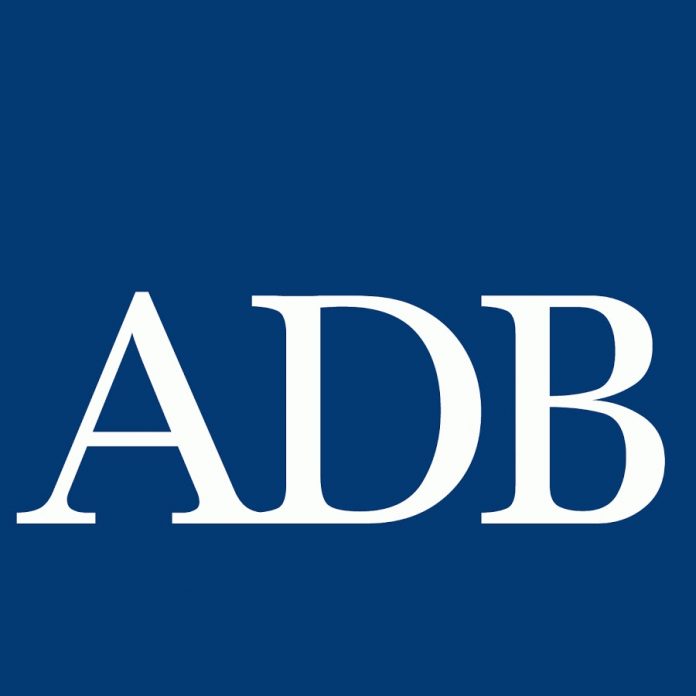Asian Development Bank in a recently report said the growth in Pakistan to accelerate in current fiscal year however hints that if remittances and exports failed to maintain the rising trend the government would have some point need to rapidly depreciate the currency to rein imports.
The Manila based- Asian Development Bank in its update for 2017 released a report and said that the GDP growth is expected to accelerate to 5.5%.
This Update assumes better growth prospects in advanced and developing economies alike, a continued revival in world trade volumes, and continued improvement in the security and business environment. The main impetus for industry and services growth will be expanded CPEC infrastructure investments, other energy investments, and government development expenditure.
Agriculture should expand by trend rates. There are downside risks. Growth has improved, but the government needs to address fiscal and external sector vulnerabilities that have reappeared with the wider current account deficit, falling foreign exchange reserves, rising debt obligations, and consequently greater external financing needs.
Political uncertainty heightened following the Supreme Court decision in August to disqualify for office the Prime Minister elected in 2013. Calm has returned, and his party will continue to lead the government until new Parliamentary elections due by the third quarter of 2018. Still, possible loss of momentum for making policy decisions may hamper growth prospects.
Rising domestic demand fueled by economic expansion is expected to stoke inflation in FY2018. However, the ADO 2017 projection for 4.8% inflation could stand with continued central bank policy vigilance, a muted increase in global oil prices, and some expected easing of global food prices. The general government budget for FY2018 sets the target deficit at 4.1% of GDP, significantly narrower than the 5.8% of GDP deficit of a year earlier. An 18.0% increase in tax collection and larger nontax revenues would boost total revenue to 17.2% of GDP. Further rationalization of current expenditure to the equivalent of 15.0% of GDP is envisioned to support a projected expansion in capital expenditures.
Total expenditures are projected at 21.3% of GDP, reflecting an increase of 18.0% on significantly higher budgetary allocations for development. Development expenditures are forecast to reach 6.3% of GDP after public sector development program allocations increased by half in FY2017, the year before an election. Notable areas for allocations are security, road transport, aid for less-developed areas and internally displaced people, health, and education. The federal budget for FY2018 assumes two-thirds of deficit financing will come from domestic bank and nonbank sources with no borrowing from the central bank. Achieving such a large reduction in the general government budget deficit and this ambitious financing target appears to be very difficult, but a continued large deficit would again require very substantial foreign financing.
There was a significant increase in government borrowing from the central bank in FY2017 to retire debt from commercial banks and nonbank sources such as Pakistan Investment Bonds. This government borrowing from the central bank helped increase commercial bank liquidity and extension of credit to the private sector, but further large borrowing risks creating inflationary pressure. Accordingly, the central bank needs to vigilantly shape monetary policy to emerging circumstances in FY2018.
The current account deficit is expected to remain high in FY2018, projected at 4.2% of GDP, with rising imports, declining remittances, and stagnant exports. A key challenge will be to finance Pakistan’s burgeoning trade deficit as remittance inflows, however substantial, continue to fall. The share of exports in GDP nearly halved from 13.0% in FY2006 to a dismal 7.1% in FY2017. Exports fell annually by 2.5% on average from FY2013 to FY2017 for lack of competitiveness or conditions for modernizing investment, leaving persistently low value addition to fetch low unit prices. Better prospects for global growth and trade are expected to further the recent improvement in export performance, however weak, in FY2017. Exports are likely to take off, though, only with adequate and reliable power supply and other supporting infrastructure and policy. Imports are expected to continue to increase as growth spurs domestic demand that domestic production cannot meet. July 2017 imports were, though 8% less than the peak in June, 50.9% above a year earlier. Petroleum accounted for a quarter of the increase, while imports doubled for power generation machinery and construction, much of it apparently related to the CPEC. The continued large trade and current account deficits in July 2017 exceeded capital and financial account net inflows to create a gap that again was covered by drawing on foreign exchange reserves, which fell by $1.5 billion to $14.6 billion at the end of that month. Worker remittances have shown some unexpected improvement, however, in the first 2 months of FY2018, increasing by 13.2% from the same period in FY2017. If this rebound can be sustained for the rest of FY2018, it may ameliorate the projected deficit.
In any case, the authorities may need to consider a rapid currency depreciation at some point to rein in import growth, or increase foreign borrowing to finance the external gap, to prevent an undue weakening of foreign exchange reserves. Over the medium term, increasing government and CPEC-related repayment obligations highlight the need to carefully manage external debt, the balance of payments, and their financing requirements, while instituting macroeconomic and structural policies to support economic stability and make Pakistan more competitive.




